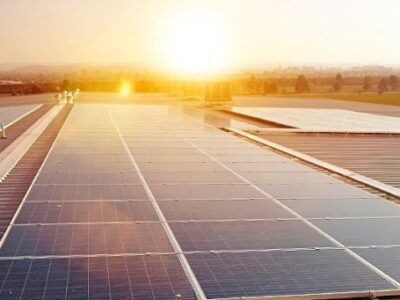The electric grid is receiving more attention today than ever, and for good reason. When you flip the light switch in your house, you expect illumination, when you stock up on frozen goods at the grocery store, you expect them to stay frozen, and when you plug in your phone to charge overnight, you plan on being able to connect with loved ones in the morning. This winter, a large swath of Texans experienced the sort of rolling blackouts that rural communities and neighborhoods prone to hurricanes or wildfires face regularly. While large power grids are an exceptional way to deliver energy to millions of people, they are vulnerable to several natural disasters. That’s why more and more, isolated, rural, or high-risk communities are developing microgrids that can keep the lights on even if the power stations fail. In fact, utility companies are removing transmission lines in high wildfire-risk-areas and purchasing renewable “islanded” microgrids instead.
So What Is A Microgrid?
“A microgrid is a collection of energy generation storage and distribution systems that can operate synchronously with, or independently from the macro grid,” BoxPower CEO Angelo Campus shared with The Business Download.
“Generally, we refer to any system that is capable of providing its own source of power as a microgrid, and then we define further whether is an off-grid or grid synchronous microgrid to differentiate between those two.” Microgrids are often power generation sources with a battery, backup energy generator, and power converters built-in. They can function as miniature power plants for small-businesses or communities completely independent from the power grid [macrogrid], or they operate as a power backup in case the macro grid goes down.
Historically, small businesses, rural communities, and out-of-the-way manufacturing facilities haven’t been able to afford microgrids. However, an American start-up is packing everything you need to set-up a personal microgrid into a shipping container. By producing the first standardized, mass-produced microgrid, BoxPower is bringing affordable energy confidence and resilience to some of the most isolated, disaster-prone areas. “We do a fully integrated solar, battery, and generator system, prefabricated in a shipping container that you can buy just like you would buy a car. You pick out which model you want and you order it,” Angelo shared. “We have standardized modular systems, individual units ranging from 5-100 kW output capacity and the ability to link multiple those units together to address just about any size load with almost no engineering or customization involved.”
So How Resilient Is It?
Earth, wind, fire, and ice have nothing on PowerBox. Not only do they currently operate in some of the most extreme conditions in the United States, but Angelo founded the company in 2010 with the mission of bringing power to the most extreme-weather regions of the world. “We go and do the projects where other people won’t,” Angelo said. Their resiliency lies in their ability to deliver microgrids basically anywhere in the world. By packaging everything in a rugged shipping container, they can deliver it from a truck to a boat to an aircraft. It can be assembled with simple tools. During the Covid-19 Pandemic, shutdowns the BoxPower team helped the locals in Hawaii set up their Microgrid without ever leaving their office in the Sierra Nevada Mountains.
BoxPower installed microgrids that brought power to the victims of Hurricane Maria in Puerto Rico, the indigenous community of Buckland, AK, and to victims of earthquakes and lava flow in Pahoa, HI. The microgrids are inexpensive and resilient, and utility company, Liberty Utilities used BoxPower’s systems to replace 4 miles of transmission lines in Lake Tahoe. Not only does this provide the customer with renewable energy, but it protects the wild-fire-prone landscape from powerline-caused fire risk. “They now have 100 percent reliable local generation. Power that is more reliable than the utility was before, and the utility saved $3 million,” Angelo said. “Day one return on investment and [it] completely eliminated the wildfire risk from four miles of line.”
After the success of the Lake Tahoe project, BoxPower won the first in a series of contracts with the United States’ largest utility company, PG&E, to provide microgrids to replace rural transmission lines for over 200 customers as part of their 2021 wildlife mitigation program. For Angelo and BoxPower, this is a sign that what they are providing has applications everywhere. “When I started the company, I thought we were going to go into places that didn’t have electrical grids and provide microgrids.” Angelo shared. “What I didn’t anticipate was that even places that do have grids, and no less than that California (one of the largest economies in the world) and PG&E (one of the most advanced utilities) is acknowledging that the traditional grid was not a safe, efficient, or cost viable way to provide power to rural customers and that microgrids are a better way to do it. To me, that’s about the most exciting thing that can happen for the industry.”





